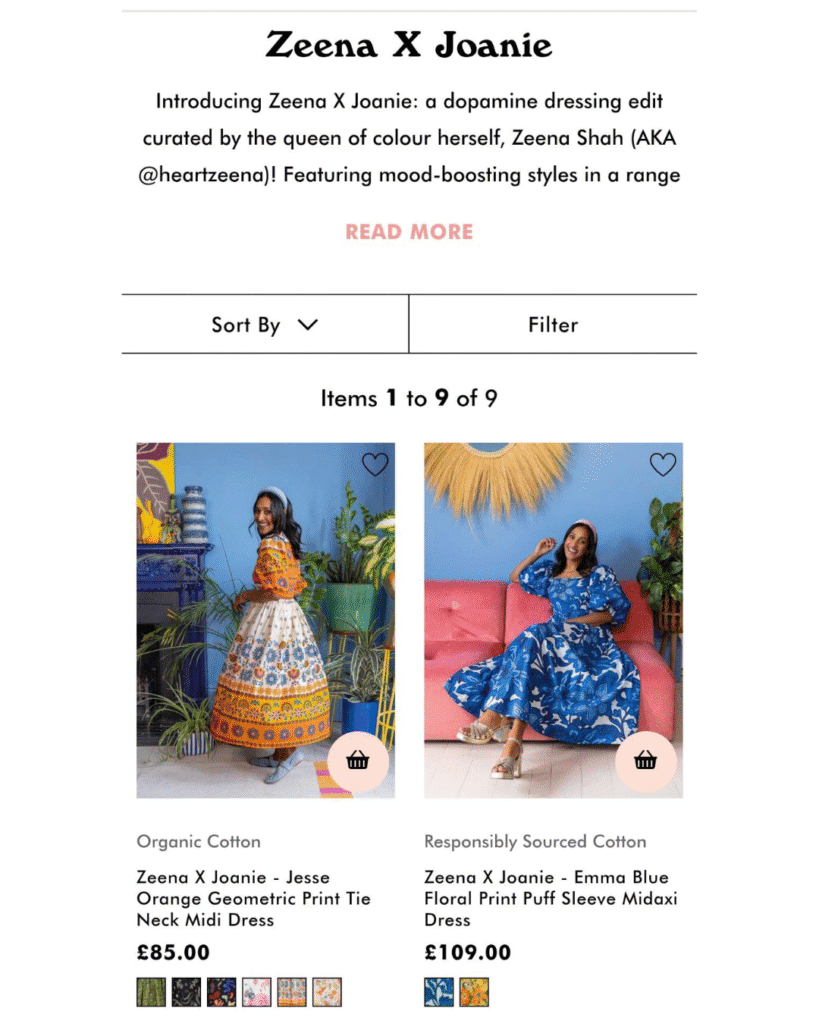By Amy Hind, Senior Conversion Executive at Launch
Performance marketers know the value of a good ad. The right platform, stunning creatives, a solid bidding strategy – all important elements of strong marketing performance.
But what if I told you that PPC ads are only as effective as the landing pages they lead to? PPC ad landing pages can make or break a campaign, ultimately deciding how your brand is perceived, and a poor performing landing page can lead to a drop in ROI, a decline in conversions, and higher bounce rates – not to mention what it’ll do to your Quality Score.
Whether you’re a B2B or B2C marketer, lead gen or e-com, your brand will benefit from better UX, smooth UI, and consistent messaging.
Here’s 5 solid principles which marketers should be considering if they want to nail PPC landing page optimisation.
1. Copy that – Matching your messaging:
Consistency is key, alignment is refinement, and keywords make the dreamwork! All famous sayings (trust me) that apply quite conveniently to the world of digital marketing.
If ad headlines, copy, and visuals don’t align with those on the PPC landing page, you risk losing the user at the last hurdle. Alignment across each stage reassures your users that they are in the right place, reducing drop-off, increasing engagement (and conversions) all while improving your Quality Score.
2. Lock in – Keep it focused and free of distractions:
Try to remember – this is not your homepage. Your PPC landing pages should be fluff free. Users on this page should already know who you are, what you’re about, where you’re coming from, so keep it tight.
Consider:
- Reducing the presence of less important CTAs
- Hiding the navigation
- Removing links to other pages.
Having a clean, stripped-back layout with one clear CTA reduces the cognitive load on users.
Below is an example landing page from our client, The Natural Adventure.

3. Order! – Use visual hierarchy wisely:
We’ve already discussed reducing your content on PPC pages, but once you’ve narrowed it down it’s just as important to structure it well.
Good design allows users to digest information quickly and easily, so try an ensure that all the most relevant features are showing up loud and clear.
- Order your features by priority
- Condense your copy into bite-sized chunks
- Be strategic with your use of space!
Optimised PPC landing page content should be able to guide users straight to that big shiny CTA button we love so much.
In the example from Joanie clothing below, we can see the PPC ad is themed around the Zeena X Joanie collection. The PPC landing page for this ad is 100 percent relevant, leading with the Zeena messaging, keeping the copy tight with an option to ‘read more’, freeing space to add product images, basket icons, descriptions and prices at the forefront of the page.


4. Trust is earned – Use 3rd party social proof to show you’re worth it:
Users often value a little reassurance that they’re making the right choice before converting, and they are skeptical about taking the seller’s word for it.
If there are reviews at your disposal (Trustpilot, Feefo etc) try and get them on the PPC landing page. They don’t need to be intensive, but a good star rating (or a couple of testimonials if you don’t have enough for a significant rating) can make the world of difference.
Here’s an example from our client, Access Self Storage. They have placed their Google review score in the very top banner of the PPC landing page.

5. Research, rinse, repeat – Keep researching and experimenting on your pages:
Rome wasn’t built in a day, and neither was your website.
It’s important to keep an open mind and explore the possibility that there might be an alternative variation of the PPC landing page that works better for your website and user.
By doing consistent research, you’re putting yourself in the best possible position for peak performance so gather your insights, generate your hypotheses, and collect some data!
Fostering a culture of experimentation successfully across teams can take work, which is why, at Launch, we document every hypothesis, test, and outcome we generate in our Learning Libraries (see the screenshot below).

Not sure where to start with PPC landing page experimentation? These resources could help…
- Here I unpack some simple customer research actions you can take – whilst it’s aimed at peak performance, many of these are universally relevant
- Another member of our experimentation team, Josh, has written an article outlining 7 steps to understanding the ‘why’ of customer behaviour
- A very simple, but effective technique we get great results from is Customer Review Mining. This 30 minute webinar introduces the basic principles
- Our free PDF guide to experimentation walks through what experimentation actually entails, the guiding principles and processes we use here at Launch, and how to set yourself up for success.
In summary – don’t treat your ads and PPC landing pages in isolation!
A great PPC landing page needs great strategy, design, and continuous optimisation.
By focusing on the relevant information, clarity, and a smooth user experience, you not only drive more conversions—you also improve your ad efficiency.
Stick to these best practices, keep testing, and you’ll turn more paid clicks into meaningful conversions.
And one more thing…
Like all great performance marketing techniques, PPC ads should not be treated in isolation. More than a decade in performance marketing at Launch has taught us that silos can sabotage ad campaigns. Weave your PPC ads and landing pages into a full funnel strategy which encompasses the whole user journey – from consideration to conversion – and you’ll be much more likely to see the results you want.
If you’re not sure how to start, we specialise in helping agencies with full funnel strategies which drive long term growth. We also love a chat, and a challenge. Why not get in touch?
About the author
Amy Hind is a Senior Conversion Executive at Launch. Connect with her on LinkedIn here.

